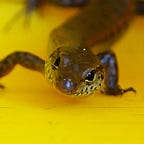An Exuberance of Shells
We’ve always been fascinated by them
Blombos Cave burrows into the heath-topped cliffs of South Africa where ancient rocks are tilted and layered like books on a shelf. Today it overlooks a wave-sculpted bay and the ocean beyond, but 72,000 years ago the sea-level was lower and the waterline much further out. Along the rocky shore, the cave’s occupiers collected abalone, limpets, top shells, turbos, mussels, and giant chitons big enough to cover a hand, and brought them back to eat. They also collected Tick Shells (Nassarius kraussianus) from river mouths and quiet lagoons. These small, sturdy shells were too small to eat. Instead, the Blombos people drilled holes with sharp bones and strung them on thread made from plant fibre or animal sinew.
We have always been fascinated by shells.
When trade routes opened from Europe to Asia and the Americas, exotic shells were taken back from tropical seas to be sold to the wealthy. From the late 1500s onwards, strange and wonderful objects were gathered in Kunstkammers and Wunderkammers or cabinets of curiosity. Rich men filled these rooms with paintings, sculptures, cultural objects, strange rocks, fossils, animal (and human) bones, narwhal and elephant tusks, rhino horns, deer antlers, hippopotamus teeth, pelts, feathers, dead beetles, and seashells. So large were some of these private…
